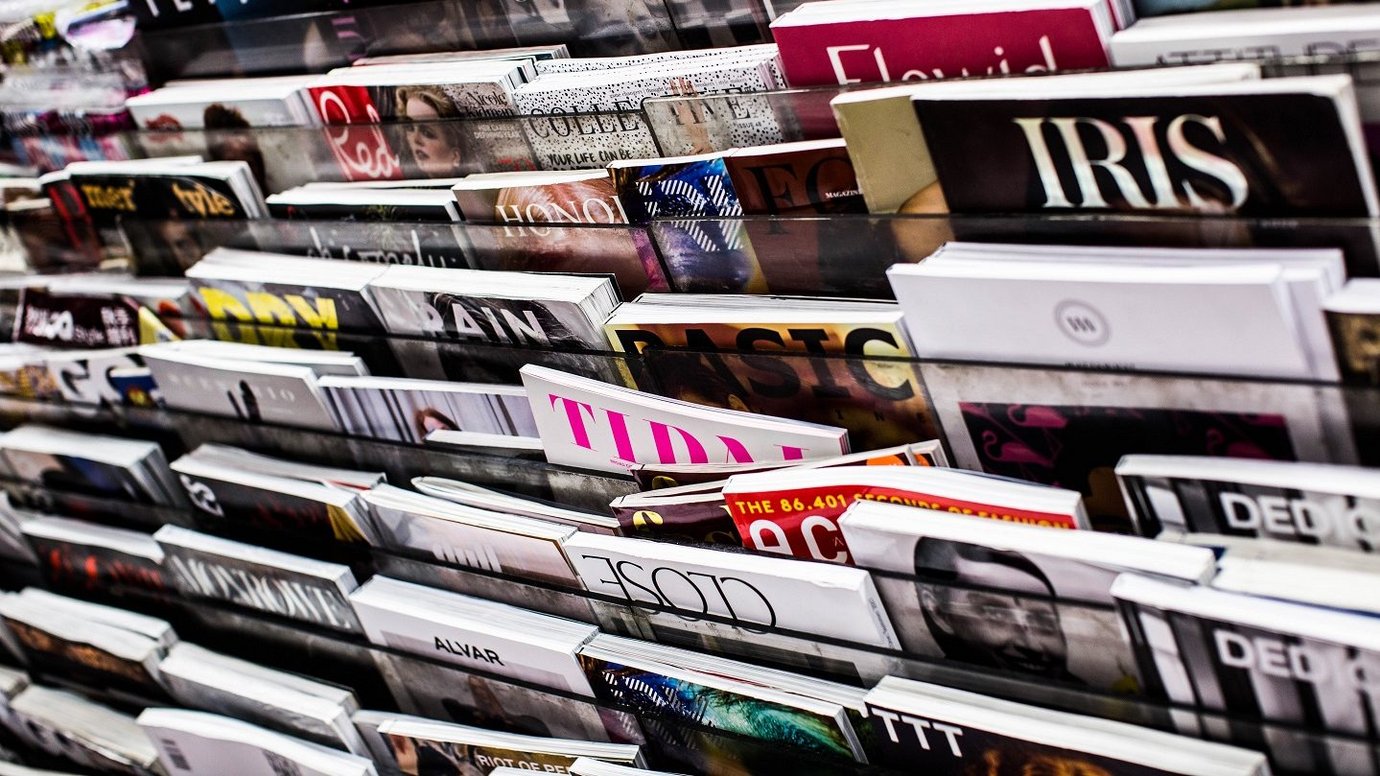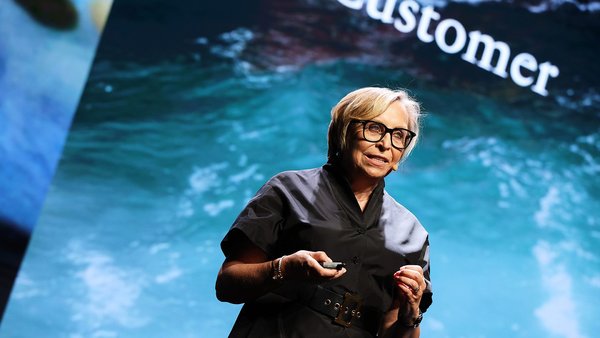Fernando Ribeiro’s Strategy Diet /
Tips and techniques from advertising’s top strategists
James Swift
/
Photo by Charisse Kenion on Unsplash
Have you ever wanted to know what the ad industry’s sharpest strategists feed their brains on a daily basis, or what resources they swear by when tackling a brief?
We have. So we’re asking.
Fernando Ribeiro is GUT’s global chief strategy officer and partner, working with clients including Popeyes, Mercado Livre and AB Inbev.
Ribeiro has previously worked at BBH in London, 72andSunny Amsterdam, and David, and he also once taught the creative process at the School of Life in Amsterdam.
What media do you consume that makes you better at your job or helps you think about strategy generally?
Books and magazines. The analogic kind. Some about advertising. Most about everything else. Here’s the thing with strategists: we spend hours every day researching brands, categories, consumers, trends… They help us think vertically about the tasks we have at hand. What they can’t help us with is thinking laterally. Our associative power is strengthened by immersing ourselves into other worlds rather than our work. Vertical investigation makes us smart; lateral investigation makes us creative. And on top, I find the object of a book or a magazine oddly beautiful, artistic even. I’m surrounded by loads of them. Too many, actually.
As I write this, I see on my desk a pile of the last five books I bought: How To Talk To Children About Art, by Françoise Barbe-Gall (which could be a book about strategy, for adults); Own It, by Diane Von Furstenberg, which I bought for the resemblance with a writing project I’ve been working on - Extraordinary Vocabulary; Guess How Much I Love You, a children’s book written by Sam McBratneey and illustrated by Anita Jeram (we don’t have kids, I just find children’s books the quickest way to have a mind break); Jean Jullien, by Jean Jullien, a French designer who has been inspiring me to articulate thoughts visually; and volume II of Mais De Um, a Brazilian magazine for left wing voters.
Are there any resources that you typically turn to first when working on a brief?
Social listening tends to be my first response to any brief. I usually start on Twitter, then move into other channels. Winnin is helpful to listen more deeply to specific trends and creators.
Another question worth answering is the resource I typically turn to last, as in when I think I have already nailed the strategy. At that point, I’m interested in resources that can help me and my team sharpen the thinking and craft the language. In my first job back in 2005, my boss asked me to buy an Etymology Dictionary for my own consulting, so that I could learn the origins of the words I was using to articulate myself, and eventually become wiser with word choices.
Who is someone that you follow/read/watch for their opinions and ideas?
People that come to mind are my mom Dulce, my therapist Miriam, and my bosses Gastón and Anselmo, the founders at GUT. But as much as that’s my genuine answer to the question, I know I can be more helpful for the reader if I share some of the folks I follow on the Internet.
I’ve been following Hans Ulrich Obrist, director of The Serpentine Gallery in London, for a while. He’s the author of the best books about art curation out there (which, by the way, has strong parallels with strategy), and handles a really cool, scrappy Instagram. The same goes for Paola Antoneli, senior curator for design at the MoMA in New York, who I went to see in person at SXSW in 2015 and have been stalking since then. Stefan Sagmeister’s Instagram is great for design inspo; The Intercept is the best for Brazilian Politics (for 50% of Brazilians, at least); The Daily podcast is my go-to for daily news; Marca for Sports; StabMag for Surfing; and The Late Show with Stephen Colbert for the smart laughs.

Photo by the blowup on Unsplash
Is there anyone or any resource that you think strategists rely on too much that is counterproductive?
Slides. We over-value them when everyone else on the planet under-values them.
What do you think is the most underused resource for better strategy?
Intuition. While a strategy without rigorous research is mere wishful thinking, a strategy without conviction is just, well, slides.
Is there anywhere you go when you’re struggling with a brief or a place that seems to help you work or think?
Physically, there’s the beach where my house is, in the south of Brazil. It’s called Ibiraquera. It’s where I am my whole, best self: as a person, colleague, leader, and strategist. However, as I can’t physically be in Ibiraquera as often as I’d like, I try to replicate my Ibiraquera state of mind anywhere I am. It’s when I can emerge from a deep thought process that’s working with strategy and just be more present in the moment. Surfing helps me get there. Especially when it’s overhead.
Lastly, a quick chat with creatives of any level of experience usually helps me unpack different perspectives on the strategy I’m struggling with, particularly when they’re not involved in the project.
Fernando Ribeiro, GUT
Office etiquette: music or no music?
Loud music or complete silence.
What’s the best free resource for a strategist?
Refer to question five – Intuition.
Secondarily, listening to people on my team, in other teams, in my family, in my friend groups, in my follower base, on the streets. Years ago, I read about this method at IDEO called ‘weird chair’ where they’d put a different-looking chair in every office room for someone from an unrelated team to come in, listen and share a point of view on what was being discussed in the room. I firmly believe the sharpest strategists listen way more than they talk. But it’s not easy.
What sort of media/resources would you recommend to someone just starting their career as a strategist?
Year 1: Start by reading Marty Neumeier’s three best books - The Brand Gap, then Zag, then The Designful Company. With those three you have the brand strategy foundations covered at a theoretical level. The widely shared strategy starter pack is a good go-to tool for beginners as well, and it covers other disciplines within strategy, including business, communications, social and experience strategy. In parallel, study ads. Sign up for The Work and deep dive into Cannes GPs, golds, silvers, bronzes and shortlists from the past decades. Do one different Cannes Lions edition a week, for a year. Look at the work, the idea behind it, and how the case study videos are structured. Become an ad nerd. Scientists study the history of science. Mathematicians study the history of math. Cinematographers study the history of cinema. Ad people must study the history of advertising if they want to be great at it. And later in your career, you’ll find out that knowing ads helps a lot in the discussion with creatives. The most common feedback about strategists that I’ve received from creative directors over my career is related to advertising repertoire.
Year 2: Reading The Laws of Simplicity, by John Maeda, will help you value simplicity at a maniac level, which is about the right level; Thinking, Fast and Slow, by Daniel Kahneman, will help you work better and adapt faster as a strategist; and How Brands Grow, by Byron Sharp, will help you be grounded in the real dynamics of our business and establish richer conversations with strategists and clients more senior than you. In parallel, continue to study ads. It may be time to buy some Archives. And even dig the internet to find Global Effies and IPA-written case studies for free.
Year 3 and onwards: Continue to diversify your sources for strategy inspo. Randomise it, even. As I said before, vertical investigation will make you smart. But only by looking into other worlds will you fuel your creativity.

What’s something that happened in pop culture that showed a better understanding of people than advertising?
I believe everything that happens in pop culture is a more accurate depiction of human behavior than advertising, especially the un-human advertising that our social feeds are flooded with these days. People can relate to ads – it’s what I live for; ads can earn pop culture value – it’s what I dream of; but it doesn’t happen often that an ad encapsulates what people, or any given community, is going through.
On one hand, the Oscars’ slap is an accurate anecdote for the systematic lack of empathy we’re all experiencing on social media. On the other hand, the multiple Emmy-award winner Ted Lasso perfectly reflects this emerging need for more empathy in sports, comedy, and beyond. Both are iconic products of pop culture. Now here’s the irony: I think ads have more chances to mimic the slap and represent lack of empathy than they have of showcasing the abundance of it like Ted Lasso.
Another way to think about this question is through the idea that the most prominent societal phenomenon of our time is polarisation. If that’s true, ads that generate controversy, niche or are done at scale, are therefore understanding human behavior. I don’t think this should be the role of advertising at all. But what comes to mind is Nike’s Colin Kaepernick ‘Dream Crazy’ campaign as a good example.
Want more of the same? /
We don’t just write about best-in-class campaigns, interviews and trends. Our Members also receive access to briefings, online training, webinars, live events and much more.







